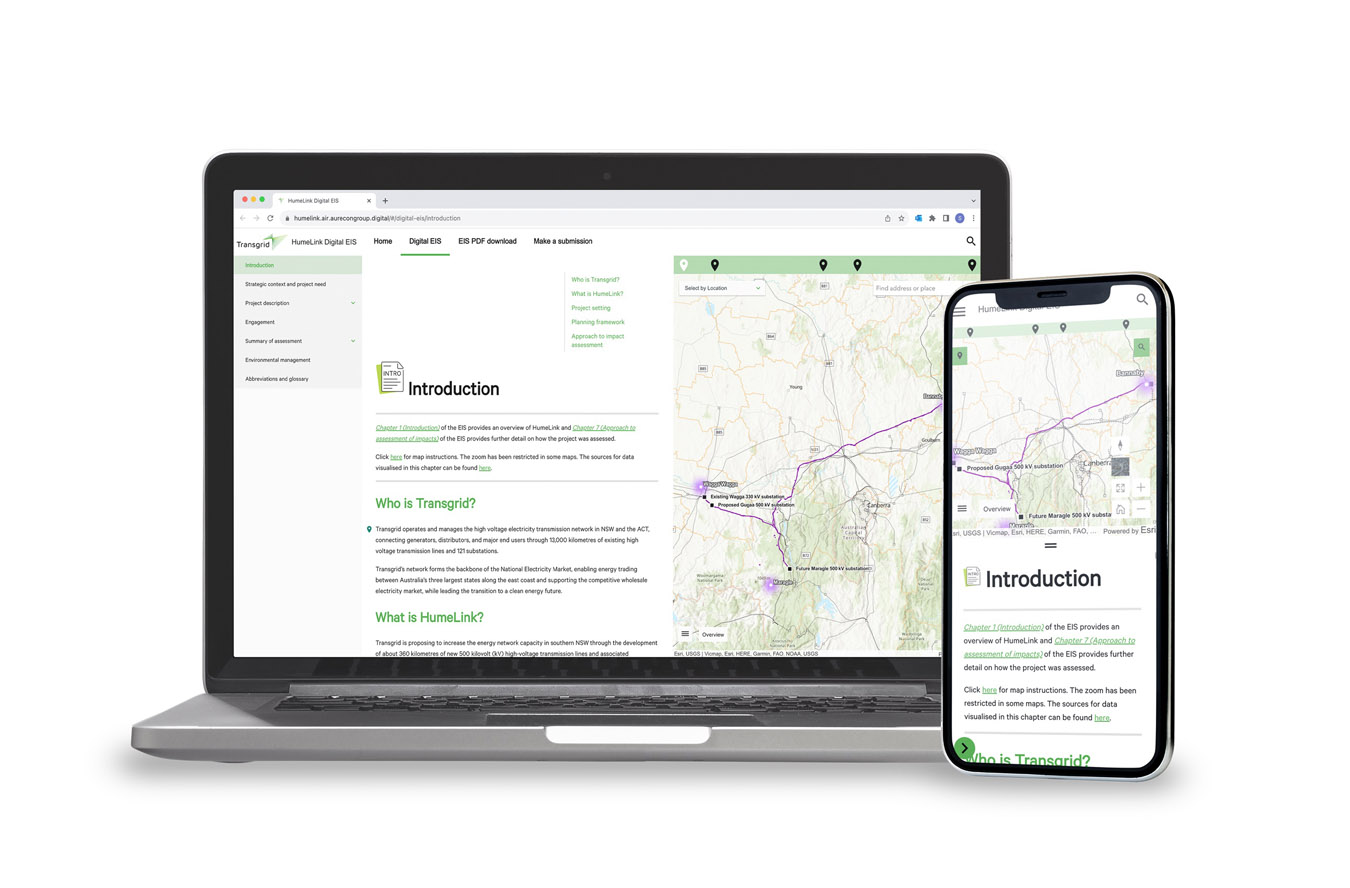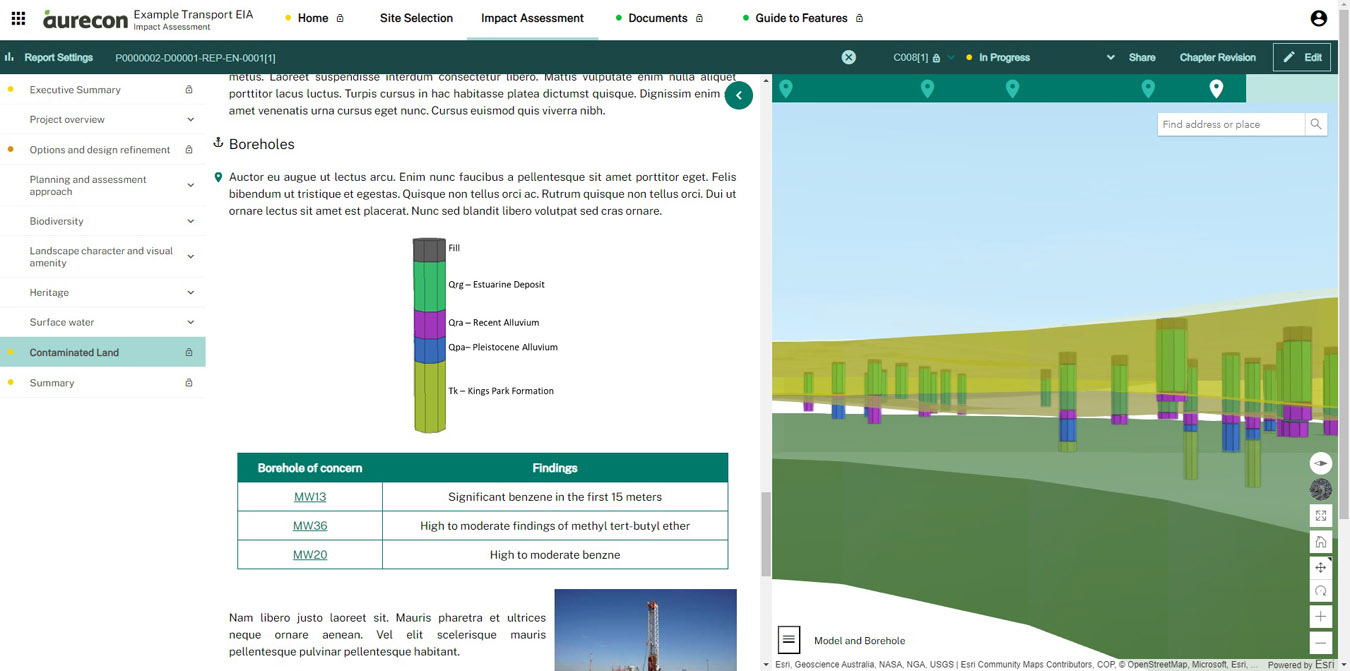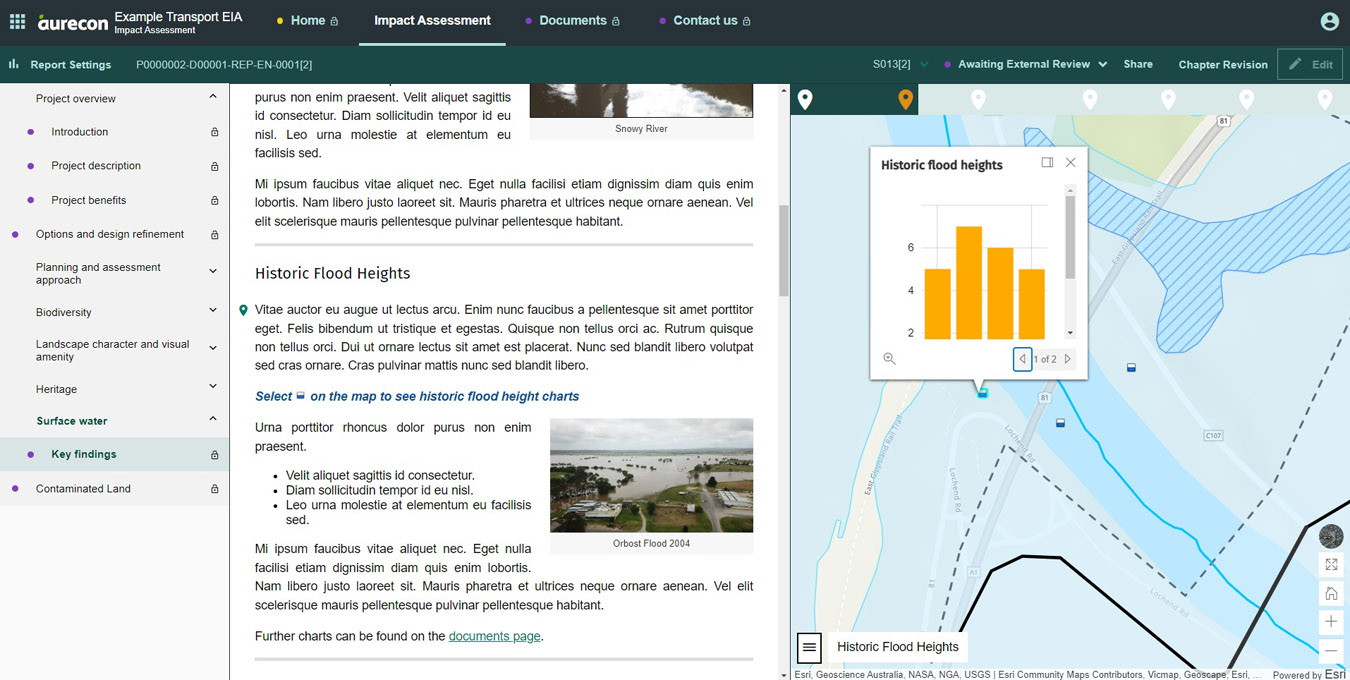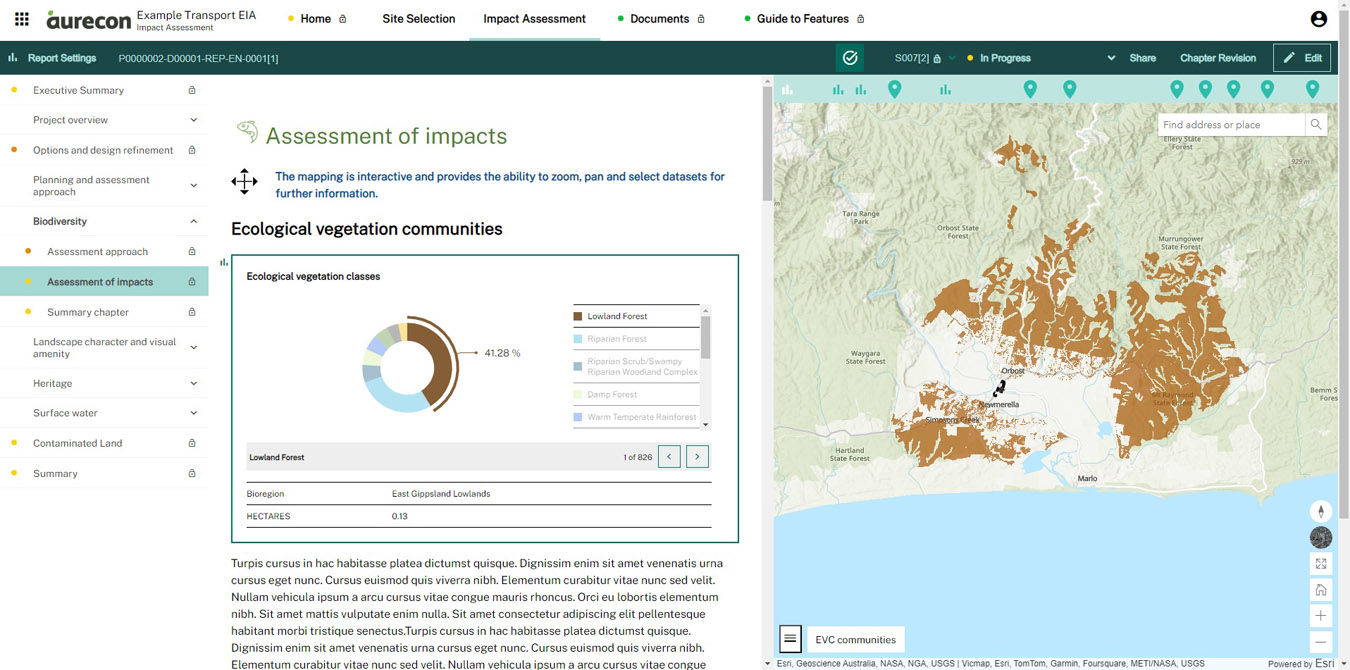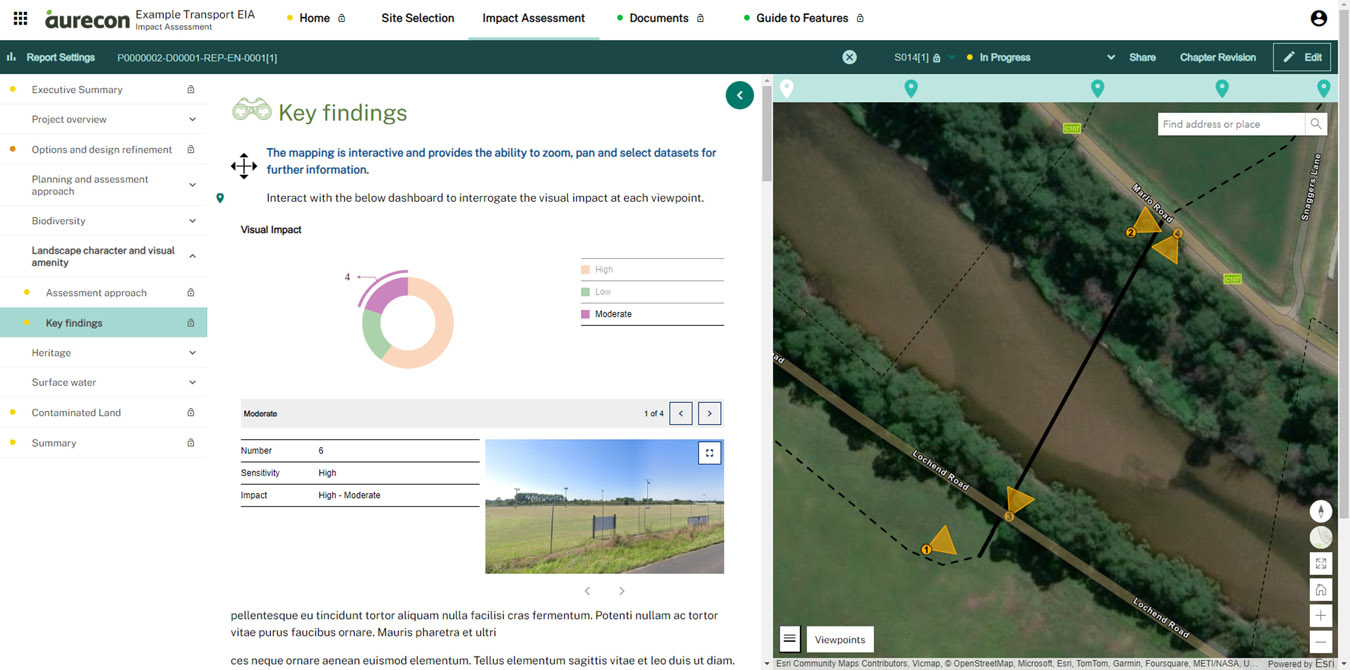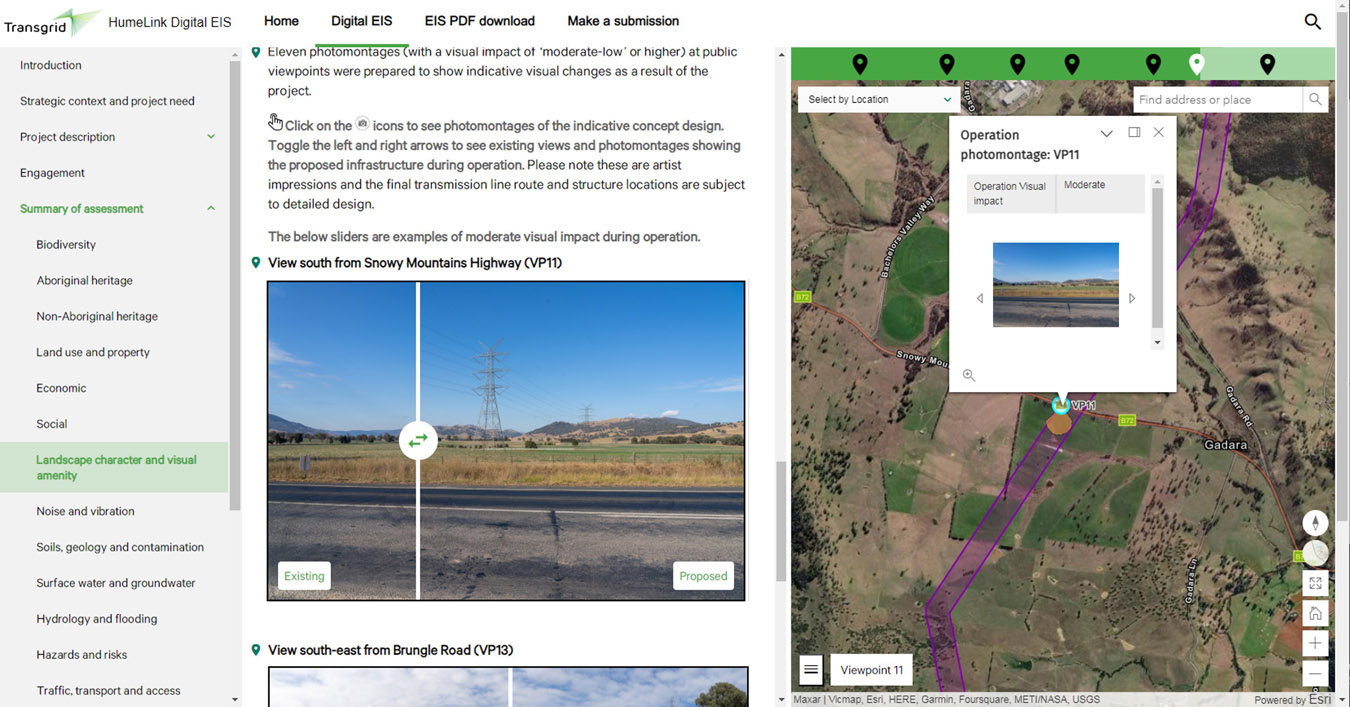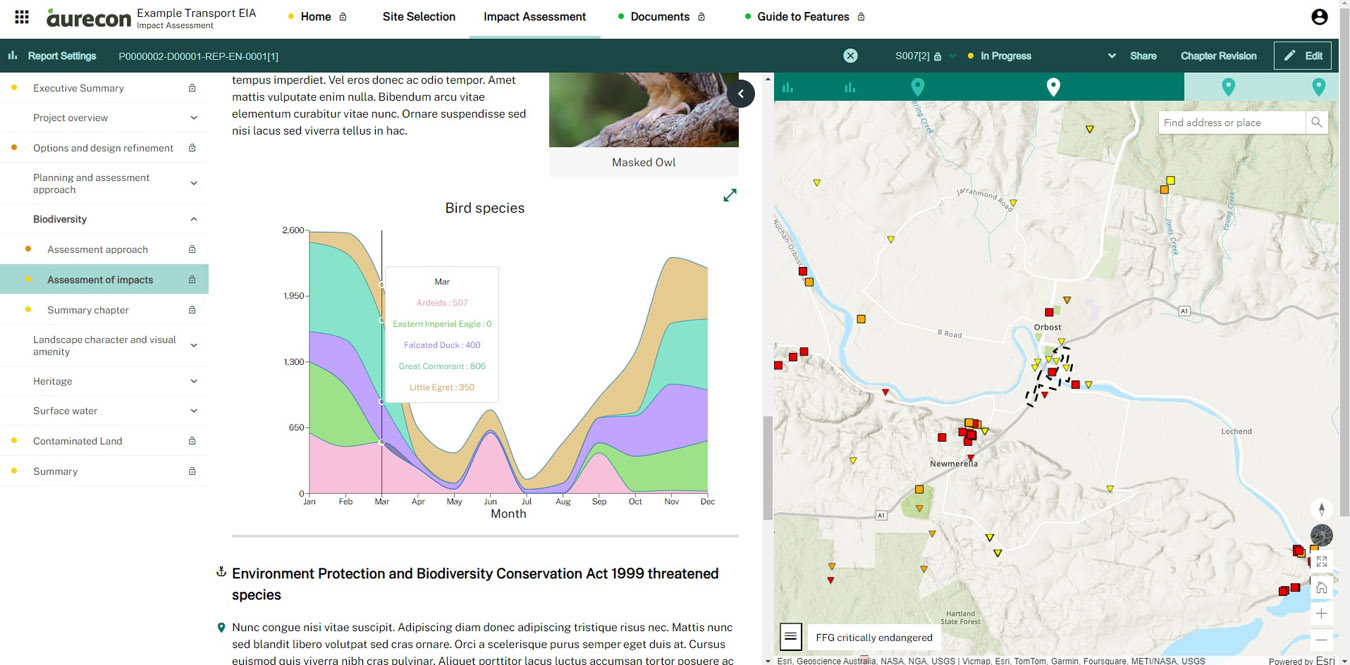Aurecon air® followed a rigorous design process to meet and exceed the design brief for the HumeLink project:
Research: Extensive research and stakeholder consultations with Transgrid, government, and the community were conducted to understand their needs and pain points - crucial for developing a user-centric solution.
Concept: Aurecon’s Creative Technology and Environment and Planning teams collaborated to conceptualise a digital platform transforming traditional Environmental Impact Statements (EIS) into interactive digital experiences. Key features included interactive maps, videos, images, dashboards, audio, temporal data playback, and 3D scenes.
Prototyping: An initial prototype was developed and piloted with two major transport authorities in Victoria, Australia. Feedback was critical in refining the platform’s features and usability. Iterative design methodology ensured continuous improvements and alignment with user needs.
Design: The platform was built with a focus on accessibility, interactivity, and data transparency. Information was presented in a user-friendly, device-agnostic format, allowing seamless data access and interrogation. Advanced features like text-to-map capabilities and document revisioning enhanced user experience and engagement.
Testing: Comprehensive testing ensured the platform’s functionality and performance. The HumeLink digital EIS underwent rigorous validation, ensuring accuracy, reliability, and user satisfaction. Feedback from stakeholders was used to make final adjustments.
Implementation: The final design was implemented, transforming the traditional EIS into an engaging digital format. The platform facilitated a better understanding of the project’s environmental, social, and economic impacts, streamlined decision-making, and enhanced community engagement.
Aurecon air® exceeded the design brief of addressing the complexities of environmental reporting, as evidenced by the degree of community engagement. The HumeLink digital EIS received 141 formal submissions for a project spanning 5 local government areas and 360km.
Analytical monitoring showed 2,000+ community members accessed 20,000 pages digitally during the public display, highlighting the platform’s effectiveness in supporting community awareness and understanding.

